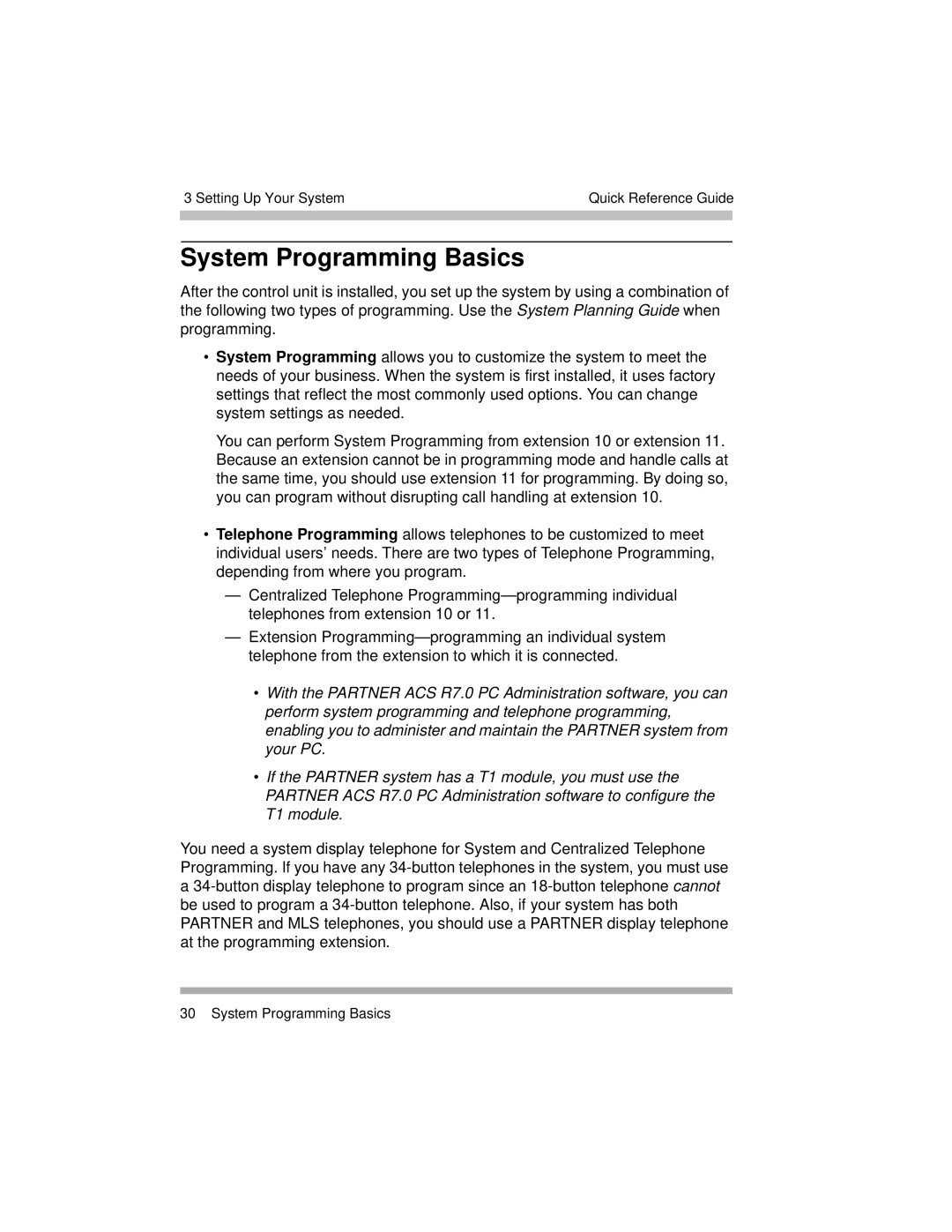
3 Setting Up Your System | Quick Reference Guide | |
|
|
|
|
|
|
System Programming Basics
After the control unit is installed, you set up the system by using a combination of the following two types of programming. Use the System Planning Guide when programming.
•System Programming allows you to customize the system to meet the needs of your business. When the system is first installed, it uses factory settings that reflect the most commonly used options. You can change system settings as needed.
You can perform System Programming from extension 10 or extension 11. Because an extension cannot be in programming mode and handle calls at the same time, you should use extension 11 for programming. By doing so, you can program without disrupting call handling at extension 10.
•Telephone Programming allows telephones to be customized to meet individual users’ needs. There are two types of Telephone Programming, depending from where you program.
—Centralized Telephone
—Extension
telephone from the extension to which it is connected.
•With the PARTNER ACS R7.0 PC Administration software, you can perform system programming and telephone programming, enabling you to administer and maintain the PARTNER system from your PC.
•If the PARTNER system has a T1 module, you must use the PARTNER ACS R7.0 PC Administration software to configure the T1 module.
You need a system display telephone for System and Centralized Telephone Programming. If you have any
30 System Programming Basics
